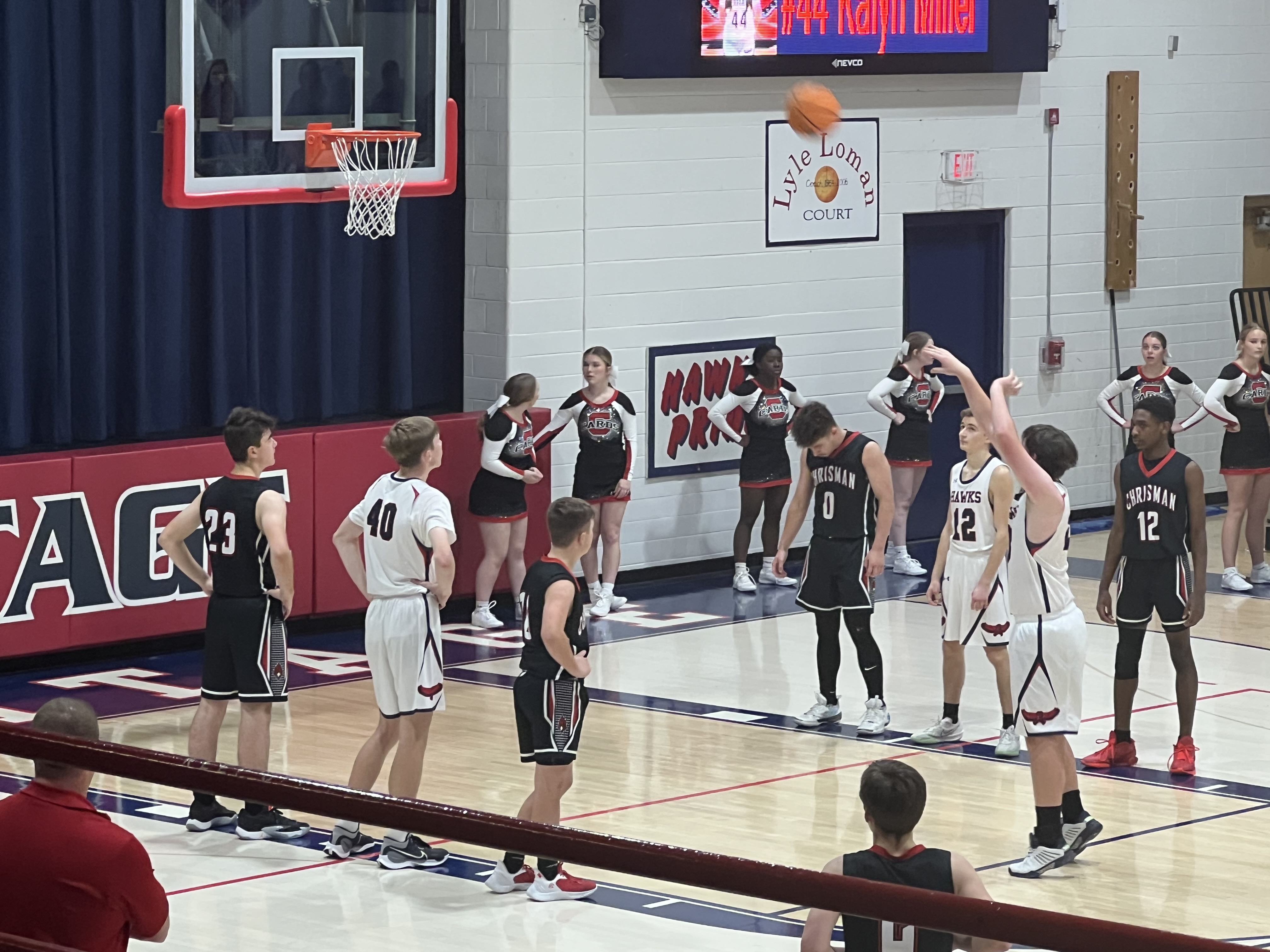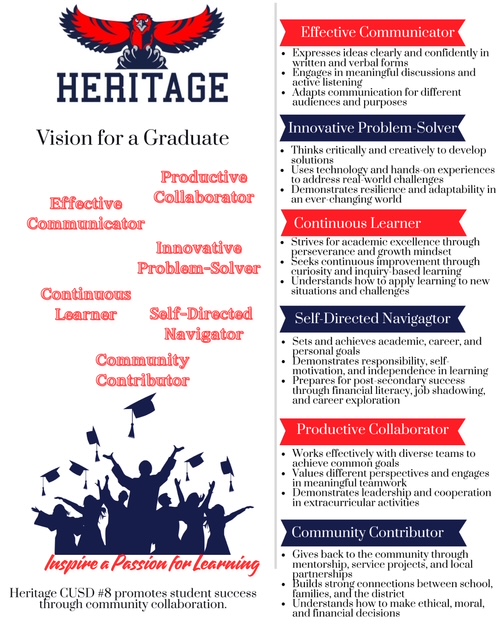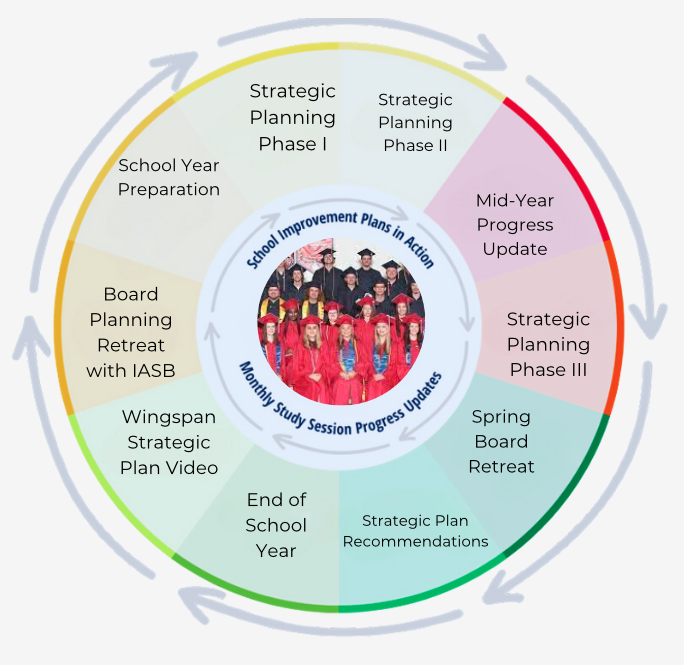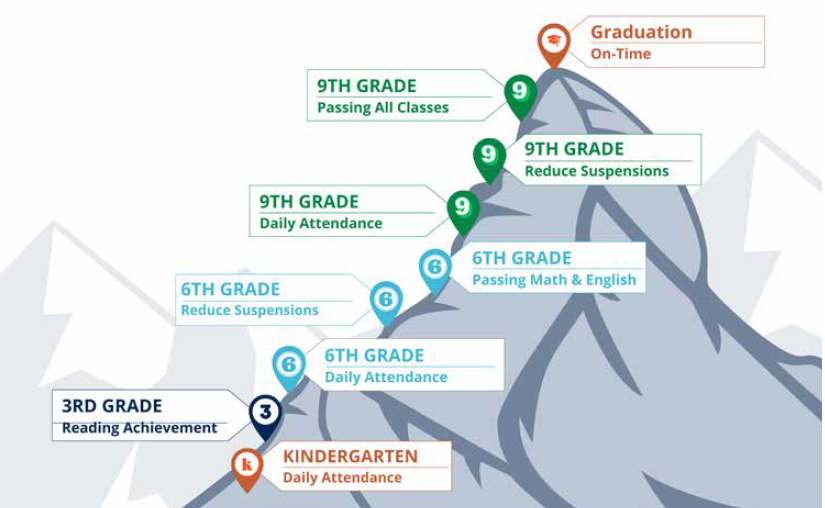Goals and Progress Indicators

Strategic Goals
Pathways to Success
Ensure each Heritage Graduate achieves post-secondary success.
>>See our strategies for building pathways to success
Intensify Academic and Extracurricular/Activities Opportunities for Students
Ensure academic success and development of whole child through equitable practices and provide each student with many choices in academic and extracurricular/activities opportunities.
>>See our strategies for helping students achieve their full potential.
Safe and Welcoming Environments
Ensure safe, secure, and welcoming environments that provide for the physical and emotional-well being of our students and staff while creating a sense of belonging and building community.
>>See our strategies for achieving safe and welcoming environments.
Expand the Financial Strength of the District
Explore additional funding sources and develop a five year financial plan.
>>See our strategies for future planning of district finances
Strengthen the Cooperative Relationship Between the Community and the District
Foster positive and collaborative relationships with all stakeholders through open and transparent communication that elevates student voices, builds reciprocal feedback loops, and engages family and community partners.

Indicators of Progress
The success of our strategic plan hinges on measuring our progress toward our goals and outcomes. This commitment is the basis of our progress cycle, which helps us ensure accountability and transparency. Each spring, the district will review progress toward the goals and identify next steps for the following school year. This commitment to continuous growth and improvement will keep our strategic plan relevant and reinforces our students first approach.

Key Performance Indicators
Key Performance Indicators (KPIs) are research-based metrics that predict graduation success. Students who meet these targets along the way are more likely to achieve academic success and graduate on time.
Research identifies three main performance indicator areas:
Attendance (K, 6, 9) — If students are not present, they cannot engage in learning. Students who are chronically absent in kindergarten are considerably less likely to read at grade level by third grade. And low attendance during the first 30 days of ninth grade is the strongest predictor that a student will drop out of high school.
Behavior (6, 9) — Students who get suspended are less likely to graduate. We seek to reduce suspensions by building positive school cultures. Schools with strong cultures yield students who are more motivated to learn and better able to build healthy relationships.
Achievement (K, 3, 6, 9) — Reading is the foundation for learning. Through third grade, students are learning to read. After third grade, students are reading to learn. Reading at grade level by the end of third grade is critical to future academic success and is linked to higher high school graduation rates. Measuring student achievement in sixth and ninth grades helps us keep students on the path toward graduation. Sixth grade students who pass math and English are prepared for success in middle school. Ninth grade students who pass all their classes for the year are four times more likely to graduate.

